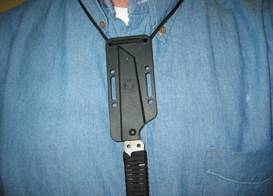
*The Proper Lanyard*

Let's face it. When we venture outdoors we use a variety of tools and gadgets. By nature (Excuse the pun) the opportunity to loose or drop our stuff abounds. For centuries man, and woman, have devised many techniques to hold onto our gear. The lanyard is just such a thing. I'm recalling Indiana Jones as he prepares to travel. He gets his trusty 45 revolver, complete with lanyard and stuffs it into his pack. Sailors tie lanyards onto knives. Adventurers have their compasses on lanyards. Coaches have whistles on lanyards. You get the idea.
In this article, I'll cover a few methods of making and using lanyards, but more importantly, I want to share some thoughts about lanyard safety. Keep in mind that lanyards, by definition, are cords around the neck to hold knives and implements. I cringe every time I see someone with a knife tied on a lanyard made out of Para-cord. Unless is has a breakaway clasp, it's a recipe for disaster. Think...hanging. Remember the scene in Crocodile Dundee when the nice lady goes down to the water to fill up the canteen. The big croc comes out of the water and all of the sudden she can't get away because of that dog-goned strap around her neck. Various industries prohibit jewelry for the same reason. It can get caught in machinery and pull you places you don't want to go.
In my opinion, the proper lanyard has the following qualities;
1. It's strong enough to hold the item securely.
2. It's weak enough to break away and avoid bodily injury.
3. Comfortable to wear.
4. The working end can be attached and detached easily.
5. It is resistant to the elements. (Water, salt, dirt, etc)
When lanyards were first devised and used they already had the above qualities. Made from manila twine, jute, or cotton, they weren't strong enough to "hang" someone.
Fortunately, today we are blessed with many options for effective safe lanyards. Ever wonder why quality knife makers use dog-tag chain for neck knives? It's so some thug can't grab you by the scabbard and pull you into an uppercut. The lanyard I'll describe today is how to make an enhanced version of just such a lanyard. You may have seen them. It's simply a dog-tag chain inside the outer sheath of 550 Para-cord. See photo of neck knife above. (Usually worn under shirt) Having the chain covered by the Para-cord makes for added comfort, it keeps the implement form sliding around the lanyard so much, and it looks cool, too. The trick is getting the chain inside the covering. Here are a few helpful tips. First you have to have the real stuff. Nylon outer covering over seven inner strands. DO NOT REMOVE THE INNER STRANDS YET.
To assemble, measure a piece of cord about two inches longer than the chain to be used. This is assuming you are going to make a neck knife lanyard. The chain is about 24" long.
For longer lanyards, you'll want to go about three or four inches longer than the chain. Cut the cord and do not burn the ends. (It will prevent you from getting the chain in the covering.)
Carefully separate one of the inner strands and tie an overhand knot in the end. Try not to pull it all the way out of the covering. This little knot will be linked on the chain clasp to pull the chain through the covering.
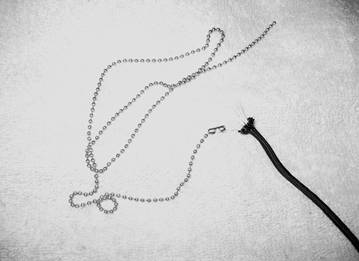
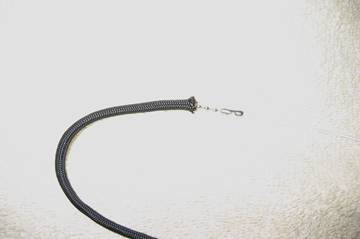
Pull all the inner strands through the covering, saving the one connected to the chain till last. Be sure not to let the end of the chain go up into the other end of the covering. It's a real problem to get it out. Done carefully and correctly, you will always be in control of the chain ends. Once the chain is through the covering you can take a lighter and burn the ends of the covering while it is on the chain.
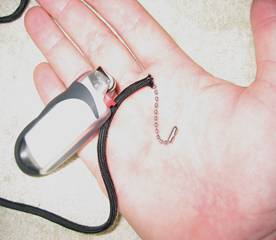
This done, it's simply a matter of sliding on your knife, compass, whistle or whatever and off you go.
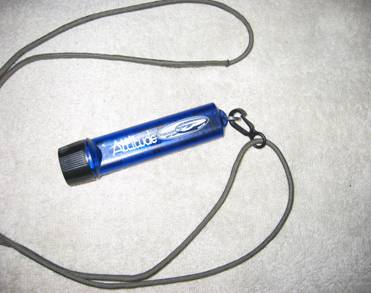
For lanyards that have implements that will be frequently accessed, I prefer a lanyard that is made of two dog-tag chains. That makes the total length at about 48 inches.
Regarding the ability to attach and detach items on your lanyards. This is mostly personal preference.
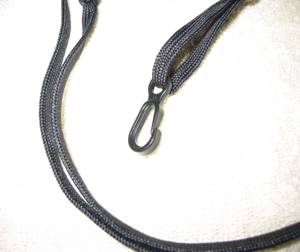
Plastic clips are just about perfect for me. They hold well, don't rust and I know they won't hold my body weight. Incidentally, I know that I am making a big point about the hanging thing. The probability is extremely slim. With that in mind I recall a canoe trip when my lanyard looped around one of the yokes when I was grabbing a cold beverage out of the cooler. I didn't get choked, I didn't get hurt, but I darn near went overboard as a result of the temporary loss of balance.
Keep an eye out for quality lanyard material. Key makers carry a staggering array of handy clips and snaps. The lanyard of a Pelican L1 is just about the perfect lanyard. That little black barrel shaped clasp is called a "breakaway clasp", hmm. The plastic hook is versatile, too.
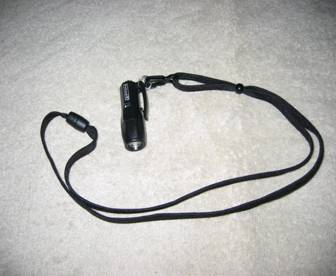
With a little Duct Tape and a small loop of Para-cord, you can attach just about anything to a lanyard.
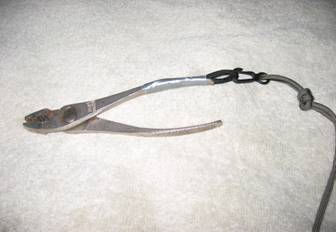
As an added bonus to the article I'll share a simple knot called a Knute Hitch. The picture should be self explanatory. It's a quick and simple way to attach a working implement to a lanyard or cord.
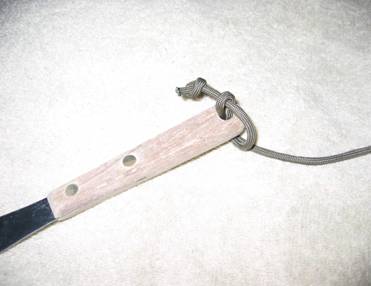
Here's a Knute Hitch tied to a belt. Pretty handy and used frequently by boat riggers.
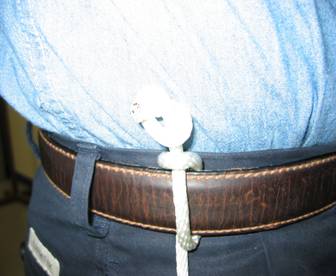
And lastly, while not a true lanyard, the GearKeeper is a well designed item that does what they say it will. Mine is self bailing, salt water resistant, strong, and versatile and provides that added measure of security and handiness.
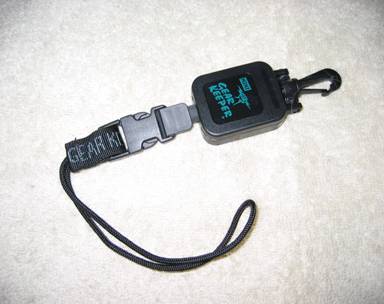
Hold on to your valuable gear and stay safe. Till next time...
RollingHitch
All materials at this site not otherwise credited are Copyright © 1996 - 2003 Trip Williams. All rights reserved. May be reproduced for personal use only. Use of any material contained herein is subject to stated terms or written permission.